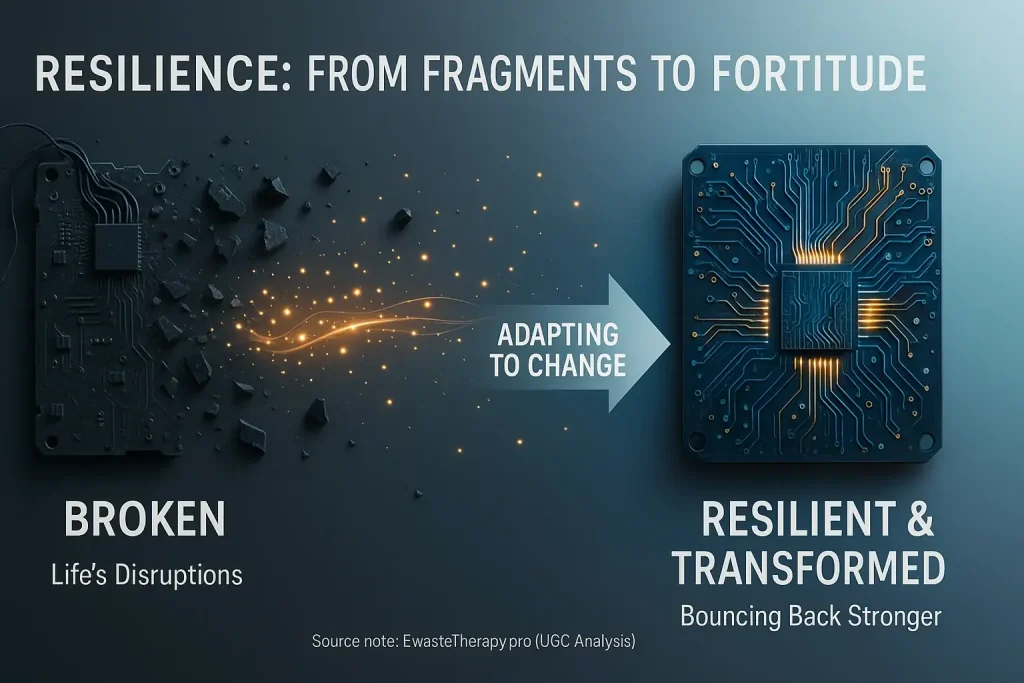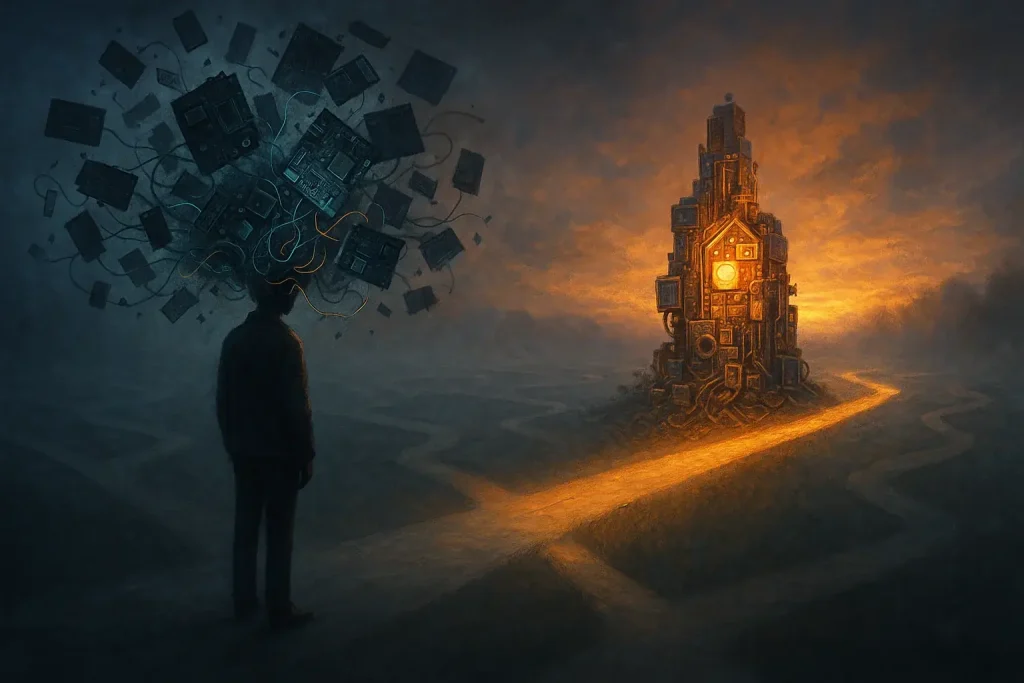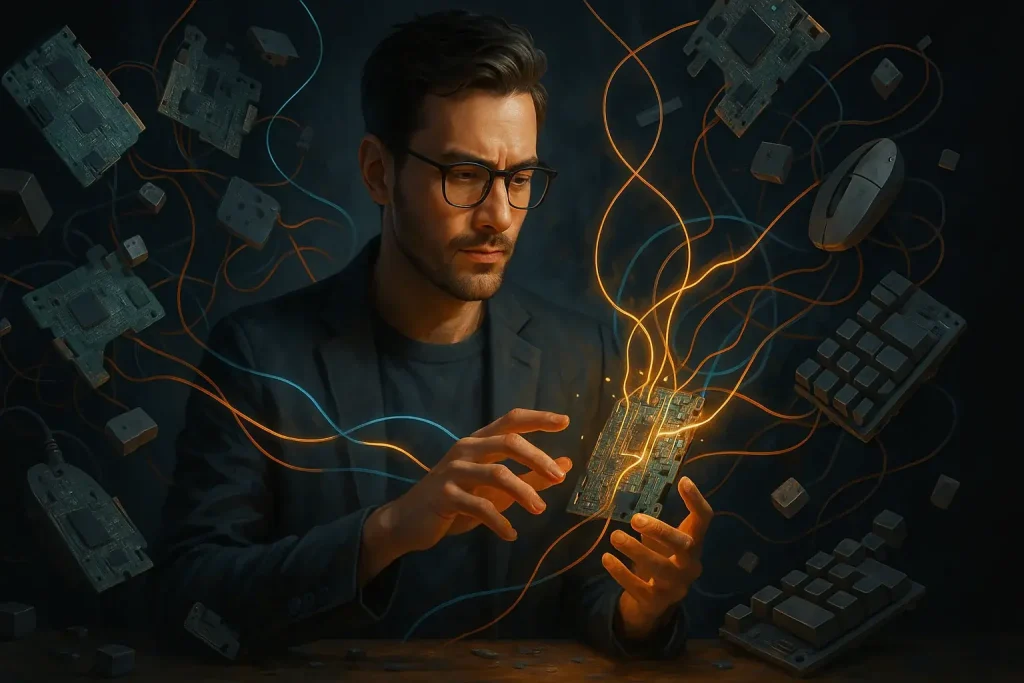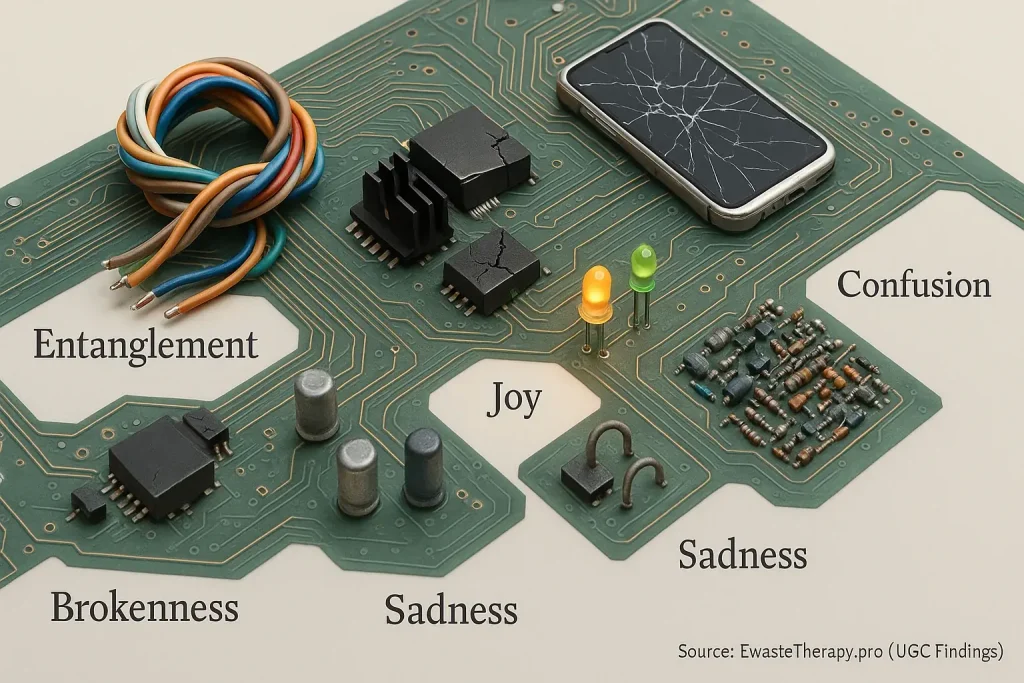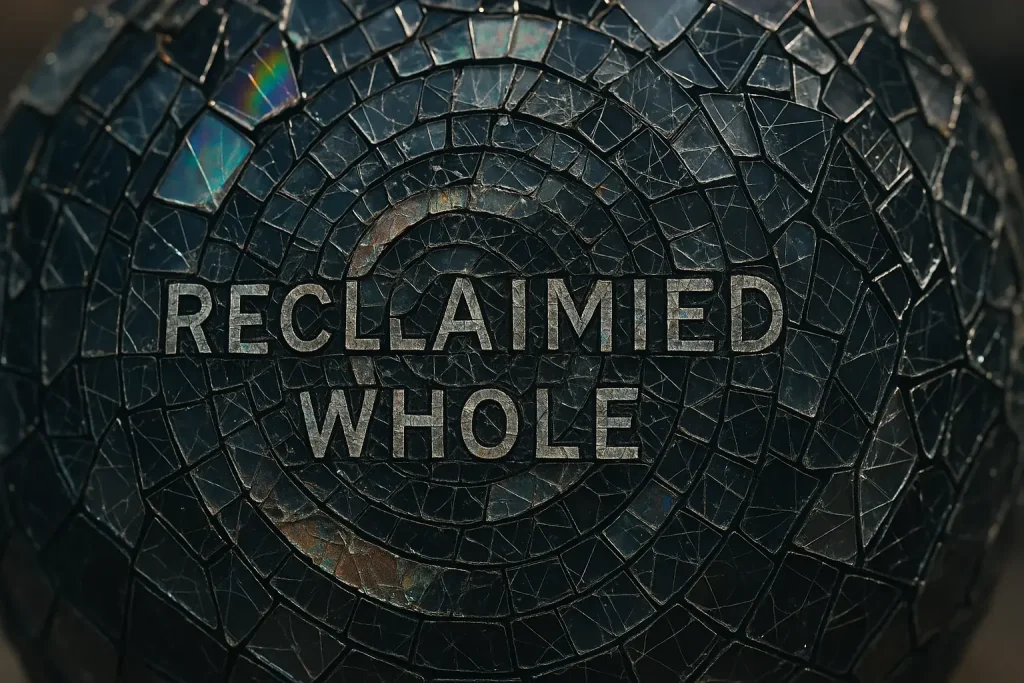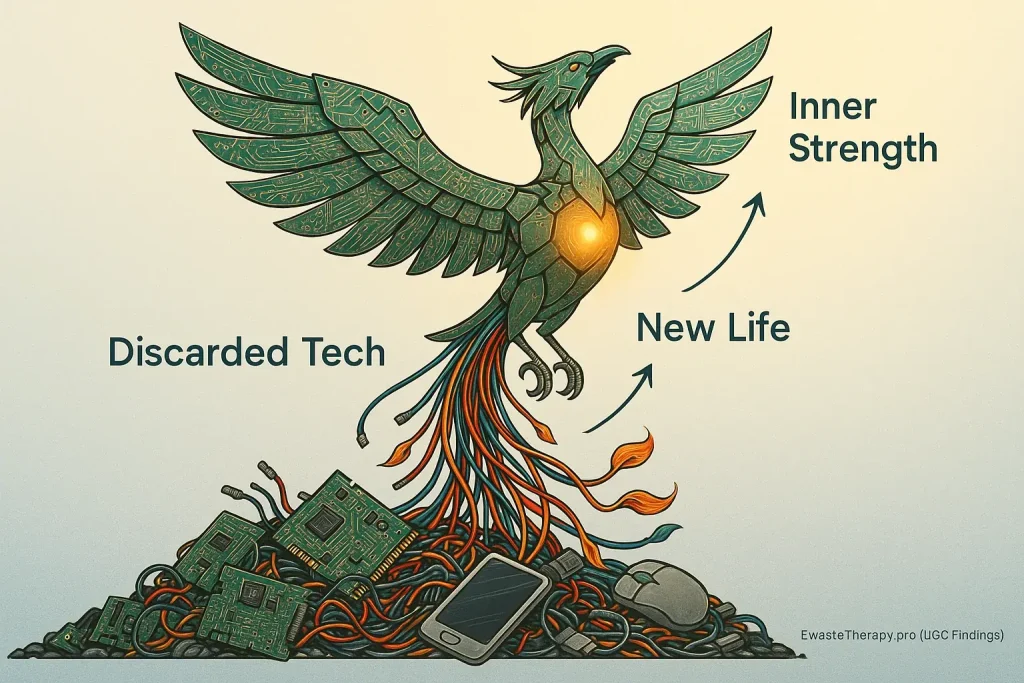Beyond Individual Healing: The Power of E-Waste Art in Groups
Ever felt a creative spark ignite when sharing a project with others? Imagine amplifying that energy with e-waste art's unique challenge. Individual e-waste art offers profound personal discovery. Group settings, however, unlock deeper layers of connection. Shared experience becomes a potent therapeutic catalyst.
Transforming discarded tech together creates powerful bonds. Our observations show participants, often initially hesitant, truly open up. They collectively sift through circuit boards, wires, and casings. Stories of old devices surface. Laughter follows. Common ground unexpectedly forms amidst this shared 'junk'. This raw, shared vulnerability builds trust remarkably fast. E-waste's 'discarded' nature often dissolves social barriers more quickly than conventional icebreakers.
This collective journey holds immense transformative potential for everyone involved. Participants frequently report that creating together cultivates a unique form of collective healing. The group art-making process itself becomes a potent metaphor for rebuilding lives and communities. Finding new purpose in discarded objects translates to finding new purpose within themselves and each other. Connection deepens. Community strengthens. Hope renews.
Unlocking Collective Healing: Key Benefits of E-Waste Art in Groups
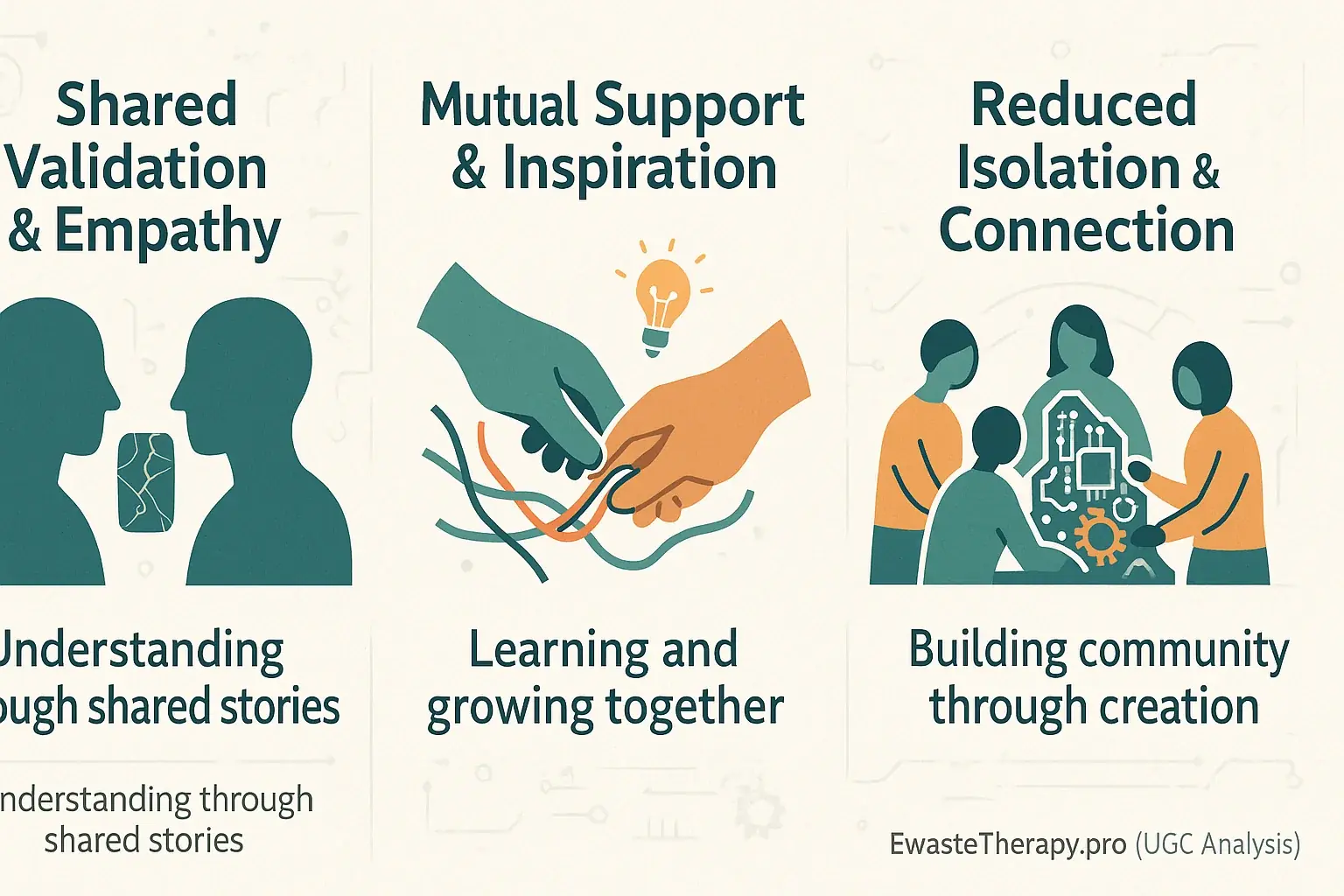
Individual e-waste art therapy offers profound benefits. Group sessions, however, unlock distinct collective advantages. These shared experiences often accelerate healing. So, what magic happens when you bring e-waste art into a group?
Shared storytelling through e-waste art unlocks profound validation. Our research into group dynamics highlights this. Many participants find immense relief. A peer uses a broken component to symbolize their own 'shattered' feeling. They realize they are not alone in their journey. This shared vulnerability around 'discarded' tech fosters deep empathy.
Mutual support blossoms organically within these creative circles. Inspiration spreads. Group members naturally offer encouragement. They share new perspectives. They provide practical help with challenging materials. One participant might struggle with a tangled wire. Another, observing the difficulty, offers a simple bending technique. This small act of support builds significant group cohesion.
E-waste art in groups significantly reduces feelings of isolation. Its uniquely tactile nature helps. The collaborative creation process can bypass verbal communication barriers. This is especially true for individuals who find direct verbal sharing difficult. These collective benefits amplify each person's individual therapeutic journey.
From Solo to Synergy: Adapting E-Waste Art Projects for Group Settings
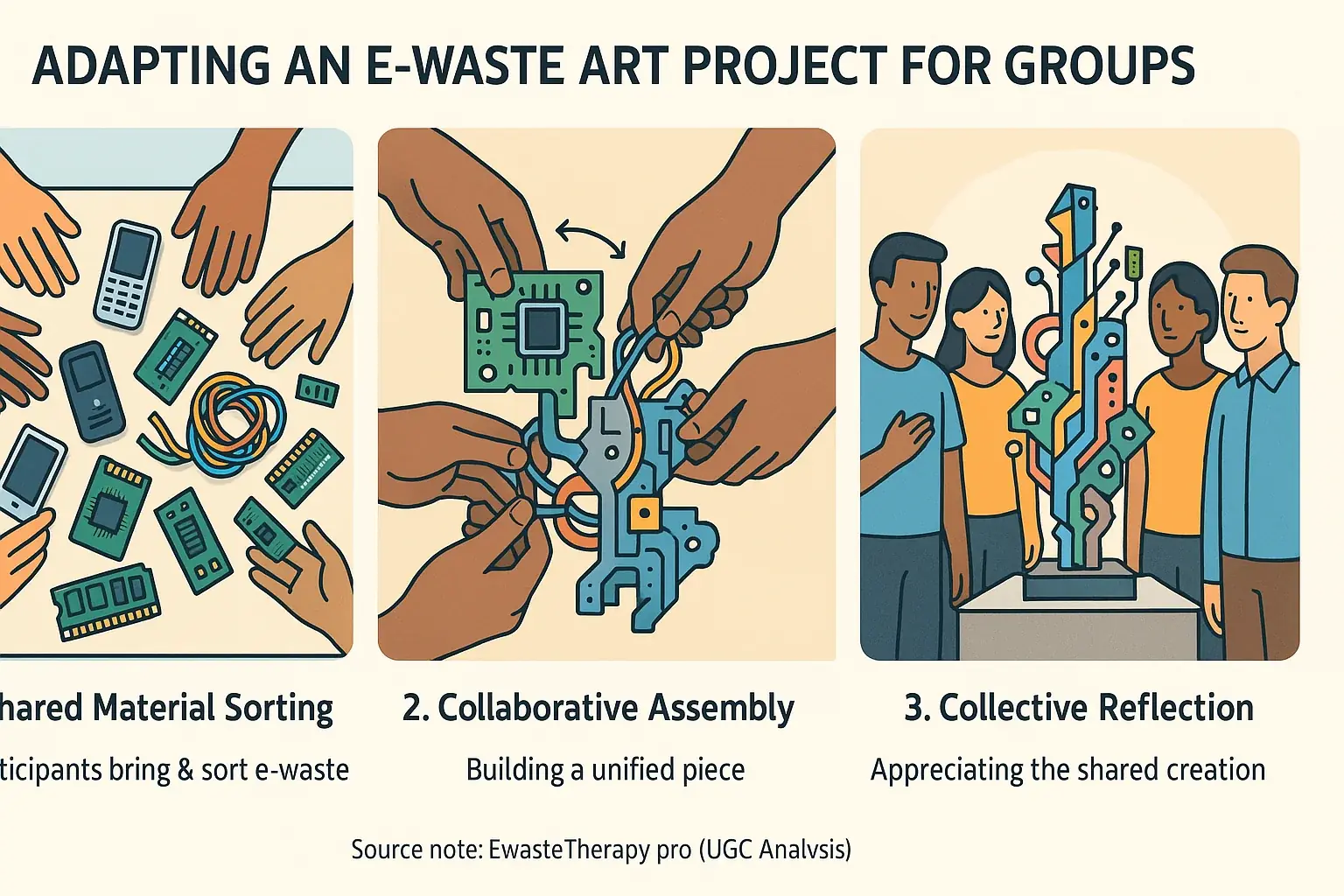
Adapting an individual art project for a group demands a mindset shift. This adaptation is achievable. The core principle involves fostering collaboration. Individual output becomes a secondary focus.
Consider a 'Shared Canvas' approach. Alternatively, 'Component Contribution' proves effective. Each participant contributes a distinct piece. These segments later combine into a larger, collective group artwork. Imagine everyone bringing one cleaned circuit board from their past. Together, the group builds a 'community motherboard.' This piece symbolizes your shared transformational journey. Our analysis of user experiences highlights a powerful technique: encourage participants to bring their own e-waste. This simple act transforms a logistical step. It becomes a profound moment of shared vulnerability. It also builds deep personal investment in the group's collective creation.
Role rotation offers distinct benefits. Skill sharing also strengthens group dynamics. Facilitators can assign different tasks. Examples include sorting components, careful cleaning, intricate assembly, or artistic painting. Members might also teach each other new techniques or share specific knowledge. This method cultivates interdependence among participants. It significantly reduces individual performance pressure, fostering a supportive environment.
Open-ended prompts are fundamental for group success. Group e-waste projects must allow for diverse interpretations. Groups should avoid rigid, predetermined outcomes. This flexibility ensures every participant feels genuinely included. Each person finds space for authentic expression. Remember, the therapeutic process, not a flawless final product, holds the greatest value in these shared creative endeavors.
Safe Spaces, Safe Hands: Ensuring Physical & Emotional Safety in Group E-Waste Art
Safety in group e-waste art is not just about gloves and masks. It concerns creating a truly safe container for bodies and emotions. Group settings amplify safety needs. This complexity demands vigilant, comprehensive protocols. Our analysis of many group experiences underscores this critical truth.
Physical safety protocols are non-negotiable in group work. Proper ventilation is essential. Designated tool areas prevent accidents. Clear instructions for handling sharp or fragile e-waste components protect everyone. Immediate first aid access must be available. Our collective experience shows small cuts can swiftly disrupt sessions. Calm, efficient management is key. Clear upfront safety briefings are therefore essential. Shared tools in groups pose a specific risk. They can inadvertently spread contaminants. Rigorous management demands extra vigilance compared to solo practice.
Emotional safety creates the foundation for therapeutic exploration. Clear group rules are vital. These rules include confidentiality and respectful feedback. Respecting individual pacing allows genuine expression. Facilitators need a plan for managing emotional intensity. A participant might share deep personal meaning from a broken component. The group then needs clear guidelines. These guide supportive, non-invasive responses. User experiences show this approach prevents overwhelm and deepens trust.
Proactive risk mitigation is the facilitator's core responsibility. A well-prepared facilitator anticipates potential physical issues. They also foresee emotional challenges. This preparation ensures a truly healing environment. Trust in safety allows deeper therapeutic work, a consistent theme in positive group feedback. This trust is paramount.
The Guiding Hand: Role of the Facilitator in Group E-Waste Art Therapy
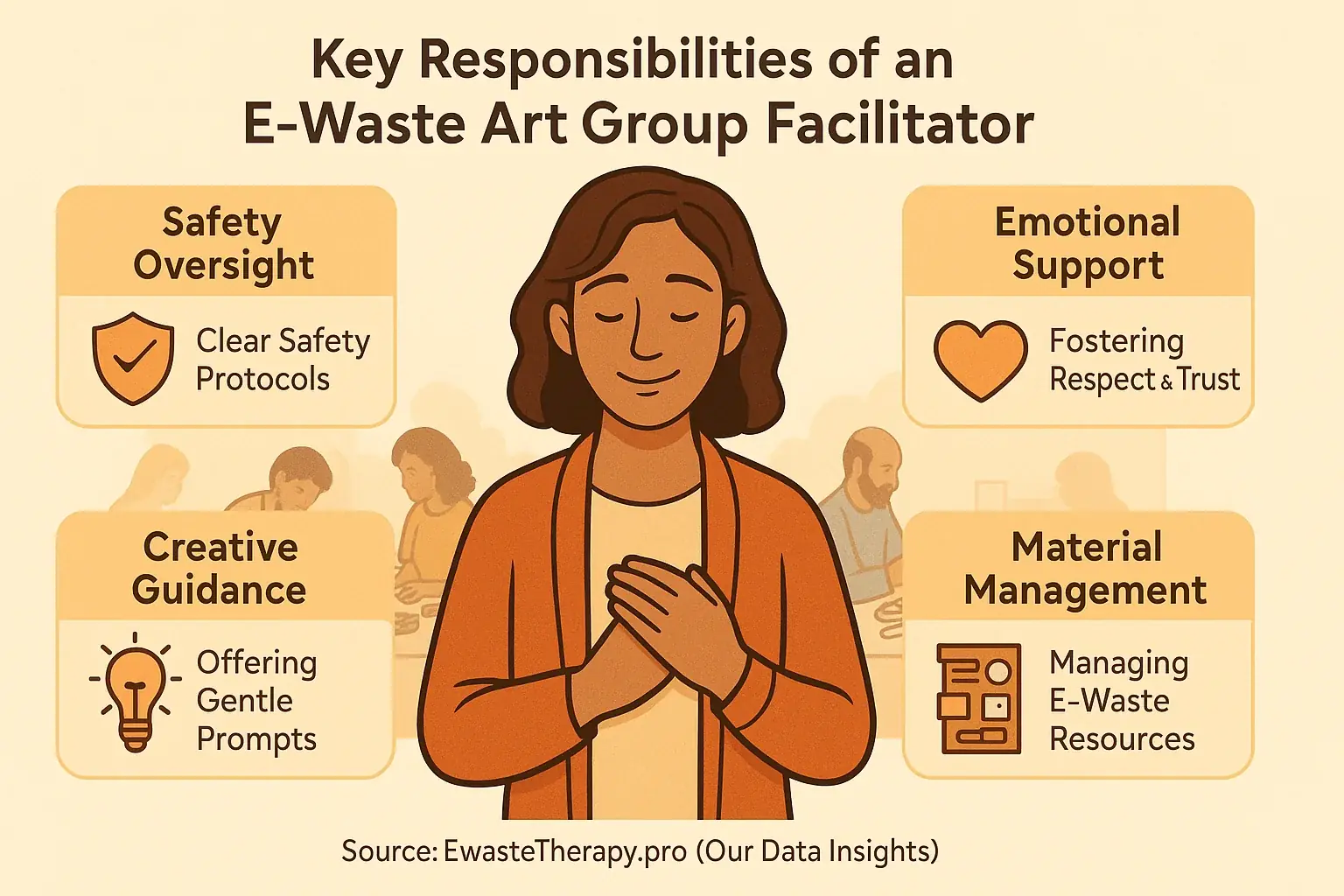
In group e-waste art therapy, the facilitator acts as conductor. They orchestrate a unique symphony of healing and creativity. EwasteTherapy.pro's extensive user experience analysis shows this guiding presence shapes the entire group journey. Specialized expertise is essential for this role.
Facilitators must balance structure with freedom. Our therapeutic frameworks highlight this delicate act. They provide safety rules. They offer basic prompts. This careful approach allows spontaneous, authentic expression. A skilled facilitator might offer a prompt: 'Build your inner landscape.' Then, they step back. They intervene only with a tool, or perhaps a gentle question. This happens when a participant seems stuck. Their own process can then unfold. Over-facilitation, our findings consistently reveal, stifles organic healing. It risks turning therapy into a mere craft class.
The facilitator holds the therapeutic container. This is a core responsibility identified in our EwasteTherapy.pro safety protocols. They manage group dynamics with care. Emotional safety for all participants remains paramount. Facilitators mediate potential conflicts. They ensure everyone feels heard. They foster respect. For instance, one participant's creation might unintentionally trigger another. The facilitator then gently guides conversation. They steer it back to individual experience. This maintains a secure space for all members to explore.
Observation is an art for the e-waste art therapy facilitator. Interpretation follows. Our expert-developed therapeutic frameworks emphasize this continuous process. They observe non-verbal cues. They note material choices. Group interactions offer rich data. These observations deepen understanding of the collective therapeutic process. Facilitators offer insights thoughtfully. They do so when appropriate, supporting participants' discoveries. This complex role requires clinical skill. It also demands creative intuition. This synthesis, EwasteTherapy.pro's research indicates, is key to profound therapeutic outcomes.
The Future of Shared Healing: Embracing Group E-Waste Art Therapy
Group e-waste art therapy offers a unique healing path. It blends individual expression with profound shared experience. This approach directly addresses modern digital overwhelm. It counters the isolation so many report feeling today.
Our increasingly digital world needs tangible, collaborative processing. E-waste art therapy provides exactly that bridge. Discarded tech transforms. Becomes symbols of collective resilience. This art fosters real-world connection, offering renewed purpose from our tech's past life.
Shared creation builds strong community bonds. EwasteTherapy.pro sees groups find new strength this way. Explore this powerful modality for your community. Witness its impact on collective healing firsthand.
Related Insight: E-Waste Art Therapy in Professional Practice: A Guide for Therapists & Counselors
Professionals seek innovative therapeutic avenues. E-waste art therapy offers a compelling option for diverse clinical settings, a trend confirmed by EwasteTherapy.pro's extensive user data analysis. For art therapists and counselors aiming to integrate this modality into their professional practice, a comprehensive guide is available from EwasteTherapy.pro.
This dedicated resource illuminates adapting methodologies for various client needs and clinical settings. It underscores non-negotiable safety protocols. Practitioners also gain deeper insights into the symbolic power of tech artifacts, enhancing therapeutic outcomes.
